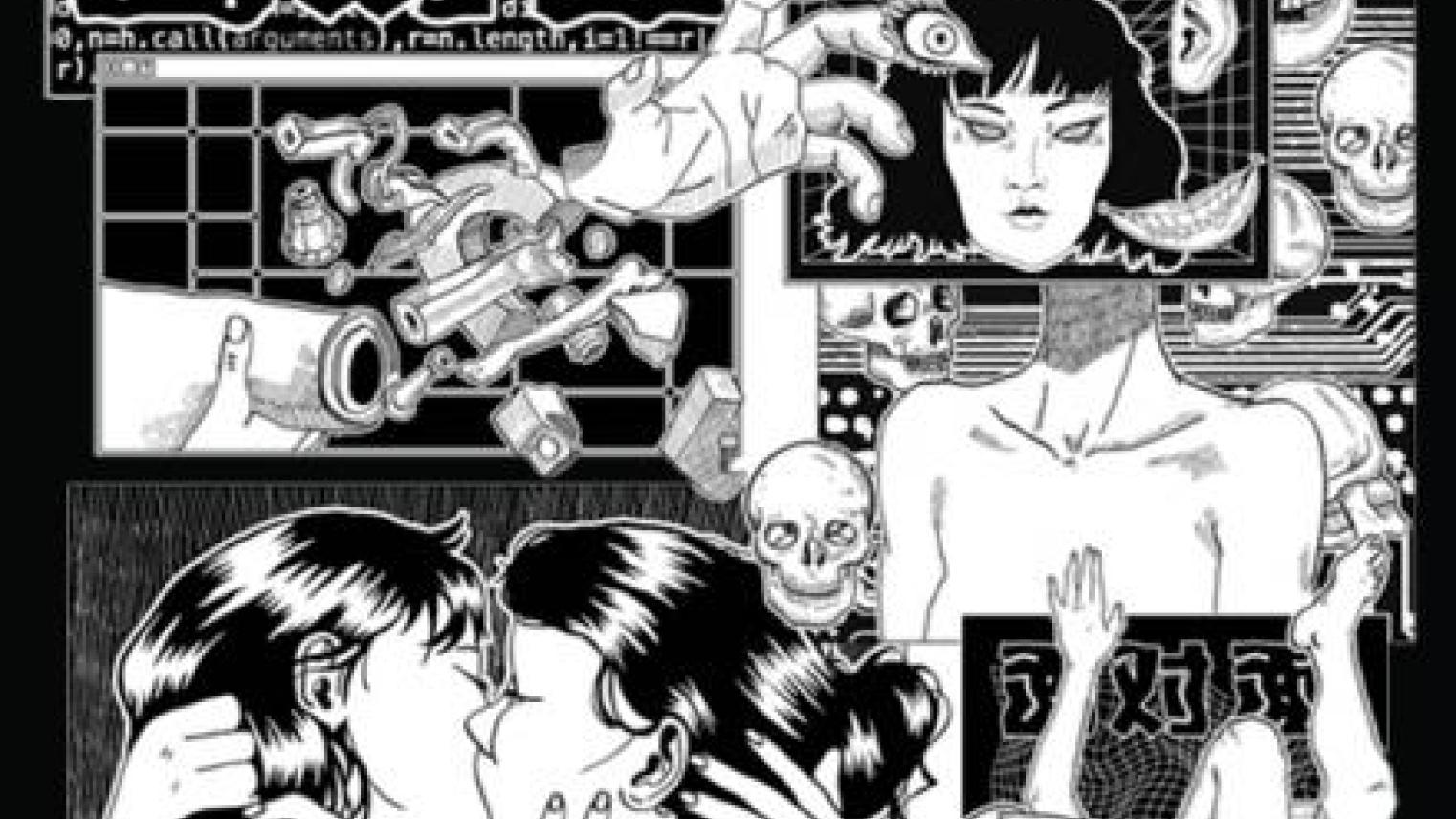The Queer Sinosphere: Contemporary Experimental Art from China, Taiwan, and Hong Kong

When body parts, organic materials and chemicals, and pathological specimens collide with art and queer literature, what do you get? You get a unique perspective on contemporary experimental art from China, Taiwan and Hong Kong.
This is an area of critical interest for Ari Larissa Heinrich (pronouns: he/they/他), who researches artworks that use biological materials. Ari, who has a Master’s in Chinese Literature from Harvard University and a PhD in Chinese Studies from Berkeley, has written extensively on Chinese and transnational visual cultures, medical illustration and critical theory. In comparative gender and sexuality studies, Ari’s co-edited volume Queer Sinophone Cultures (with Howard Chiang for Routledge, 2013) impacted a range of research areas in Chinese-speaking contexts.
One of the key contributions of Queer Sinophone Cultures was to foreground otherwise marginalised aspects of Chinese cultures by offering constructive critiques of mainstream cultural and sexual practices in locations as diverse as China, Singapore, Taiwan, Hong Kong and Malaysia. Ari is also known for their translations of key works of queer literature from Taiwan in the late twentieth century. They teach a range of subjects, from experimental art writing to queer and speculative fiction—as well as the intersections thereof—and have lectured on topics ranging from the history of medical photography to the exhibition of Chinese cadavers in internationally circulating anatomical displays. Ari’s overarching research focus is on medical humanities and the human body in art and the humanities.
This includes studying overlaps in popular culture, such as the history of Frankenstein’s monster in China or the circulation of anatomical exhibits associated with China. While all of these various interests may seem far apart, they do, in fact, come together, especially in Ari’s more recent work. Ari’s recently co-edited special issue of Screen Bodies: An Interdisciplinary Journal of Experience, Perception, and Display (with scholars Howard Chiang and Ta-wei Chi) gathers essays about everything from a Mainland Chinese artist who uses transgender imagery to a Taiwan sculptor, trained as a dentist, who makes synthetic tiger penises in an effort to divert wildlife poaching for medical materials; the issue includes interviews and more. Ari’s first research monograph, The Afterlife of Images: Translating the Pathological Body Between China and the West (Duke University Press, 2008), has become a “go to” work in classes on Chinese cultural studies of the body.
What led to this unique concoction of expertise? Ari’s pathway to their interest in medical humanities stemmed from their early enthusiasm for science, medicine and maths as well as art and literature; they believe the traditional hard line between science and the humanities often doesn’t do justice to either.
Transgender in translation
Another area of interest for Ari lies in the translation of literary works by queer authors from Taiwan. For Ari, translation is a way to contribute to cultural exchange to help Sinophone literature reach larger audiences; it’s a form of outreach, as it exposes material and perspectives to those who are not students of Chinese Studies. Ari’s translation of an experimental memoir by the celebrated Taiwanese author Qiu Miaojin’s (Last Words from Montmartre, New York Review Books, 2014, with a full-length Afterword), was a finalist for the 2015 Lambda Literary Award as well as for the Best Translated Book Award of 2015; it has been reviewed in international venues ranging from Book Forum to the Times Literary Supplement.
Ari’s latest translation was published in June 2021 from Columbia University Press. It’s a short novel by Taiwan author Chi Ta-wei called The Membranes, first published in 1995. The Membranes is a work of speculative fiction with a sympathetic protagonist and a narrative driven by internal, personal growth, rolled into the form of a queer story of life in a dome under the ocean after a climate apocalypse. Featuring everything from cyborgs to high-tech surveillance, the novel is, as the author Kim Stanley Robinson puts it in an endorsement, “a powerful story about consciousness and connection with other people. It cuts right to the heart of our current moment by way of metaphor, but in a manner that is entirely Chi’s, and thus a new thing for English language readers.”
According to a pre-release review in Publisher’s Weekly, “Readers will notice prescient echoes of modern life in Chi’s depictions of all-absorbing media consumption and loneliness in the midst of hyper-connection…Though Chi’s meandering, restrained style will be unfamiliar to many Western readers, this captivating novel is rich and rewarding.” For Ari, The Membranes is essential reading, as it represents the diversity of voices—including queer ones—in the speculative fiction Sinosphere at a time of peak international interest in Chinese speculative fiction.
An experiment in the making: the road ahead
Ari’s research into the overlaps of race and gender in visual culture and science continues with their latest project on the transgender Hong Kong artist Jes Fan, an artist whose work uses biological materials like melanin, estrogen, testosterone, and urine as mediums to comment on gender, race and embodiment. The book (working title Decolonial Melanin: Jes Fan’s Contagious Xenophoria) received support from the Andy Warhol Foundation Arts Writers Grant. Structured like a glossary, it will be designed to allow readers to skip through and engage with different aspects of Jes Fan’s artwork according to what they are most interested in, so they won’t have to read a slab of academic text all at once. Ari’s book thus explores—among other things— the complex social life of melanin and the changing meaning of ‘race’ at a critical juncture in the history of biotechnology and culture.